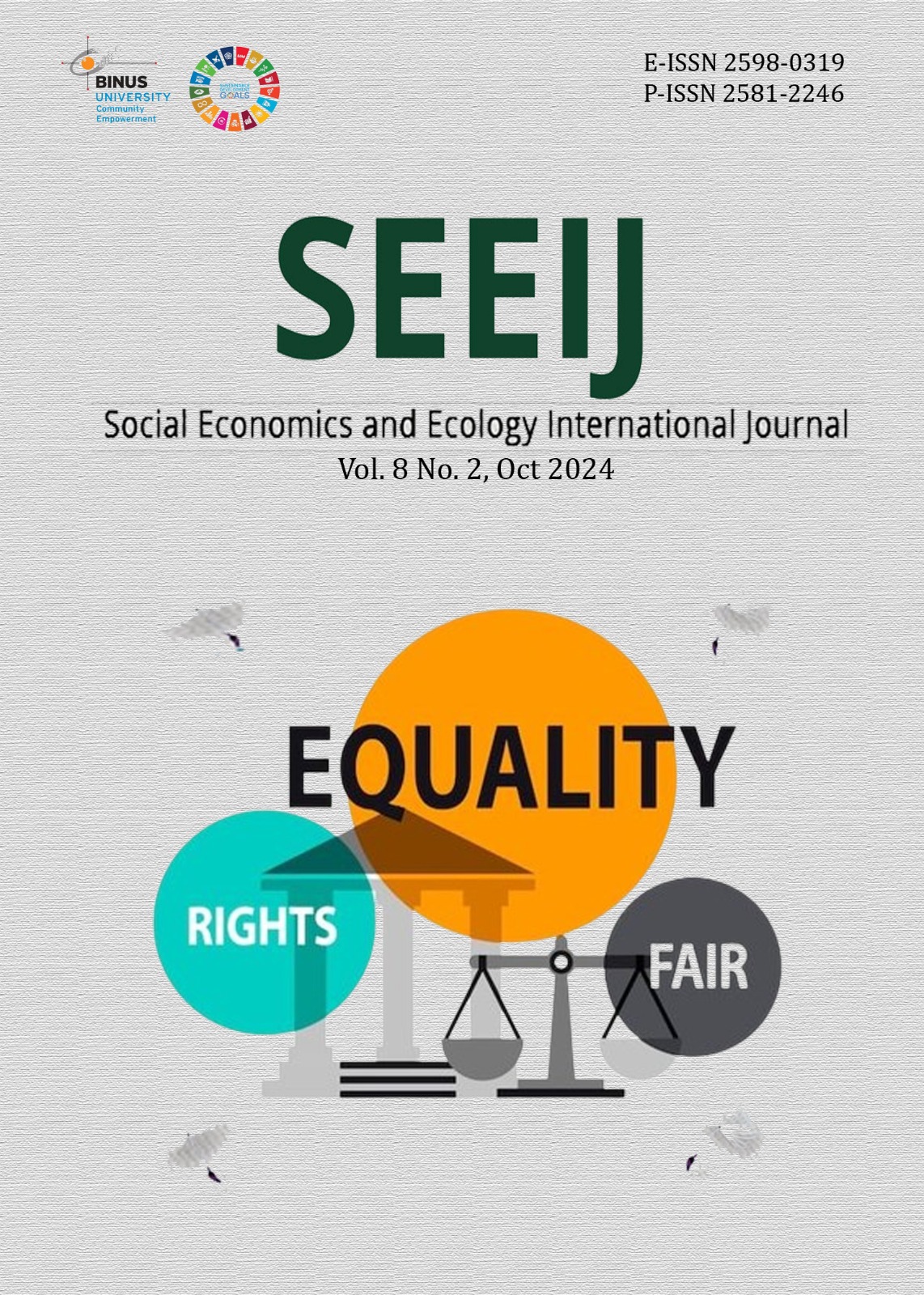The The Utilization Of Homework Videotaping To Enhance The Students’ English Speaking Skills
DOI:
https://doi.org/10.21512/seeij.v8i2.12005Keywords:
homework, videotaping, speaking skillsAbstract
Enhancing students' oral proficiency is a key objective of English courses, and one effective pedagogical approach is assigning video-based homework that features English conversations aligned with the curriculum. English language students encounter numerous challenges when attempting to enhance their speaking abilities. One limitation is the restricted amount of time available for in-class practice. One possible homework assignment is to create video recordings. This offers a chance for students to enhance their creativity and boost their self-assurance as the homework encompasses various elements of oral assignments, such as productivity, intention, challenge and authenticity. Hence, this webinar aims to disseminate knowledge on the specific teaching methods and procedures that teachers can implement when utilising this instructional approach. The purpose of this webinar was to provide the teachers, instructors and practitioners in the field of English education with an interactive forum for discussion. Participants will have the chance to share their experiences and ask questions, which will lead to a fruitful exchange of knowledge. Engaging in activities can yield fresh perspectives and impart useful skills that are immediately applicable to the classroom or other educational setting.
References
Arifin, S., & Ilyas, H. P. (2020). Teknologi Blended Learning Dalam Meningkatkan. 3(1), 17–28.
Bryan, A., & Volchenkova, K. N. (2016). Blended Learning: Definition, Models, Implications for Higher Education. Bulletin of the South Ural State University Series “Education. Education Sciences,†8(2), 24–30. https://doi.org/10.14529/ped160204
Burns, A., & Siegel, J. (2018). Promoting Descriptive Writing Through Culturally Relevant Literature. In A. Burns (Ed.), International Perspectives on Teaching the Four Skills in ELT. Springer International Publishing AG. https://doi.org/10.1007/978-3-319-63444-9_14
Handrianto, C., & Rahman, M. A. (2018). Project Based Learning: A Review of Literature on its Outcomes and Implementation Issues. LET: Linguistics, Literature and English Teaching Journal, 8(2), 110–129. http://jurnal.uin-antasari.ac.id/index.php
Harmer, J. (2007). The Practice of English Language Teaching. Pearson Longman. Pearson Longman.
Indrawati, D., Perdani, Y. D., Nadelia, F., & Moloney, M. J. (2021). The Effectiveness of Motion Graphics in Improving Students’ English Ability during the COVID-19 Pandemic. ICETC 2021: 2021 13th International Conference on Education Technology and Computers, 347–353. https://doi.org/https://doi.org/10.1145/3498765.3498819
Kamarullah, K., & Muslem, A. (2018). Applying English Video Learning Materials in Teaching Listening. “Eej,†9(4), 527–540.
Nunan, D. (2015). Teaching english to speakers others language an introduction.
Perdani, Y. D. (2022). Enhancing the Students’ Grammar Comprehension by Utilizing the Video-based Instruction. In ACM International Conference Proceeding Series (Vol. 1, Issue 1). Association for Computing Machinery. https://doi.org/10.1145/3572549.3572600
Renandya, W. A., & Widodo, H. P. (2016). Language Teaching Today (5th ed.). Springer Nature.
Surkamp, C., & Viebrock, B. (2018). Teaching English as a Foreign Language. In J. B. M. Verlag (Ed.), TESL Canada Journal. Springer-Verlag GmbH. https://doi.org/10.18806/tesl.v3i0.1001
Yusob, K. F. (2018). Challenges of teaching grammar at tertiary level: Learning from English lecturers’ insights. E-Academia Journal, 7(1), 149–158.
Downloads
Published
How to Cite
Issue
Section
License
Copyright (c) 2024 Yella Dezas Perdani

This work is licensed under a Creative Commons Attribution-NonCommercial 4.0 International License.
The Authors submitting a manuscript do so on the understanding that if accepted for publication, copyright of the article shall be assigned to SEEIJ Community Development Academic (CDA) Bina Nusantara University as publisher of the journal.
Copyright encompasses exclusive rights to reproduce and deliver the article in all form and media, including reprints, photographs, microfilms and any other similar reproductions, as well as translations. The reproduction of any part of this journal, its storage in databases and its transmission by any form or media, such as electronic, electrostatic and mechanical copies, photocopies, recordings, magnetic media, etc., will be allowed only with a written permission from SEEIJ Community Development Academic (CDA) Bina Nusantara University.
SEEIJ Community Development Academic (CDA) Bina Nusantara University, the Editors and the reviewer make every effort to ensure that no wrong or misleading data, opinions or statements be published in the journal. In any way, the contents of the articles and advertisements published in the SEEIJ are sole and exclusive responsibility of their respective authors and advertisers.

This work is licensed under a Creative Commons Attribution-NonCommercial 4.0 International License.









